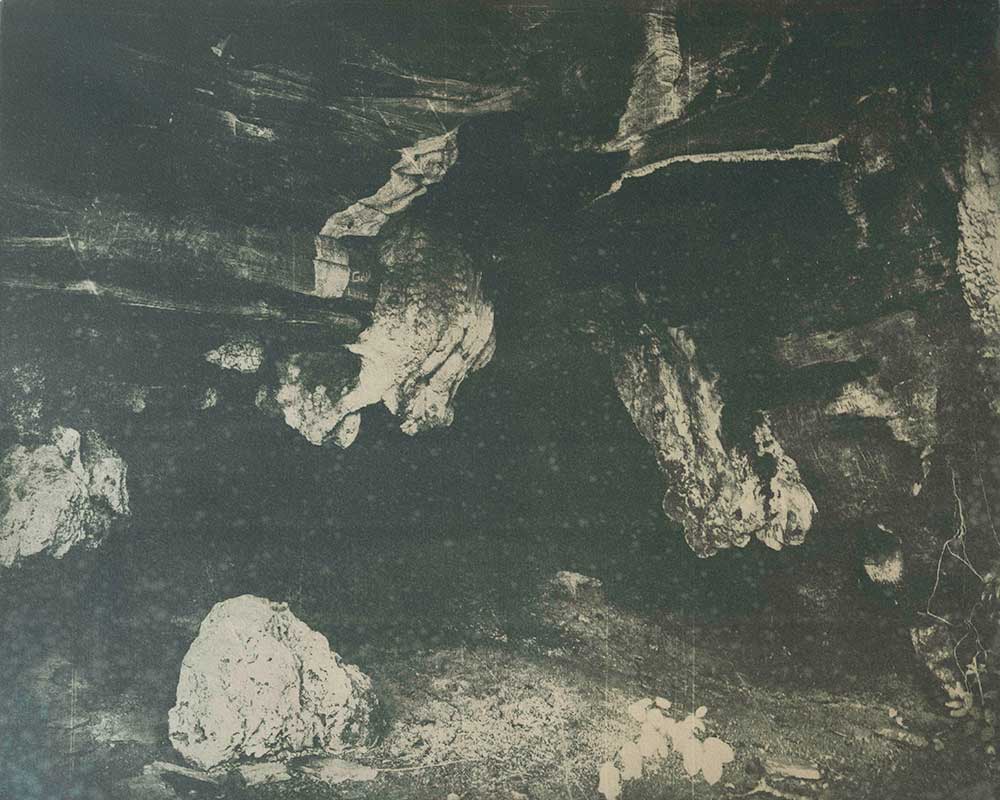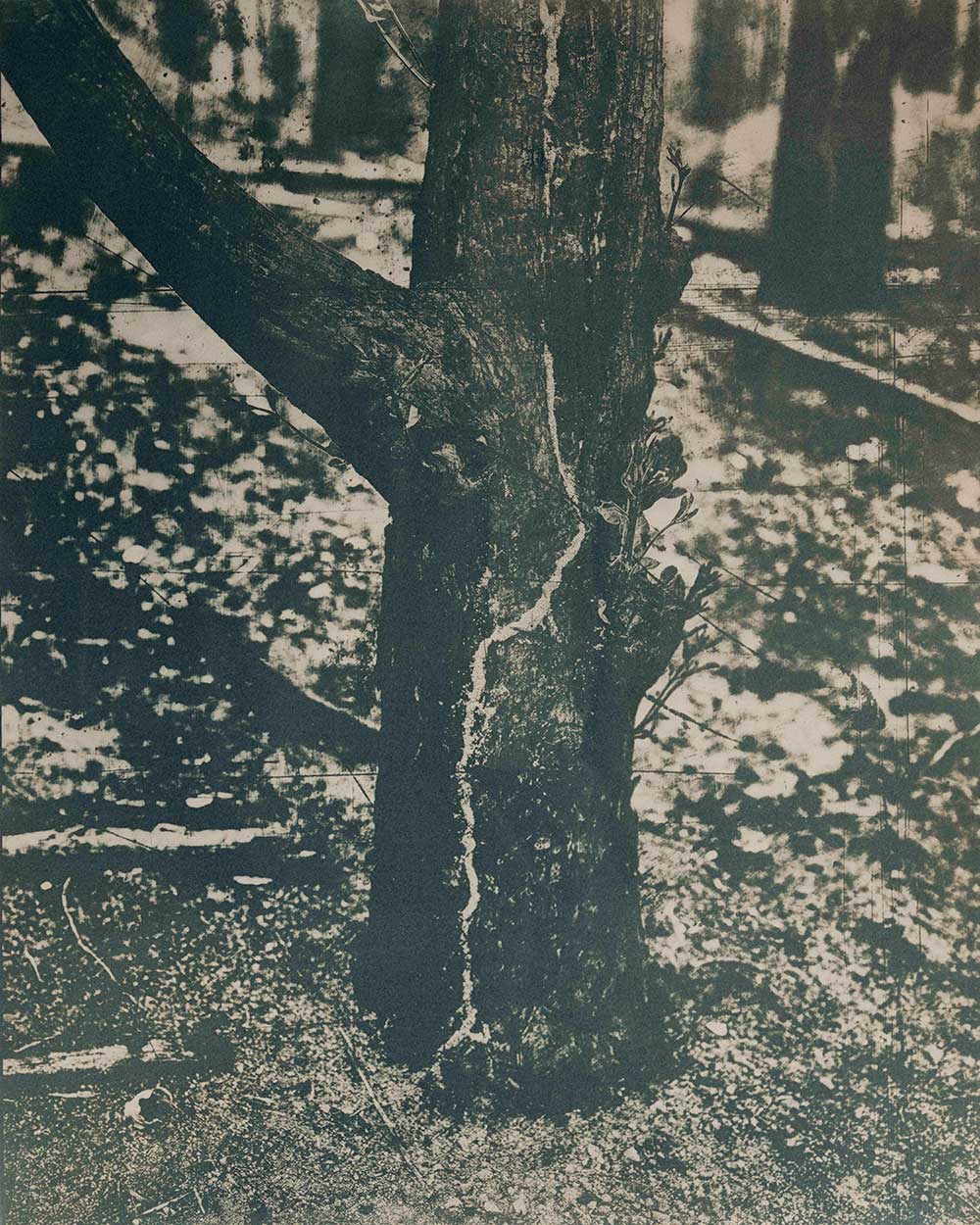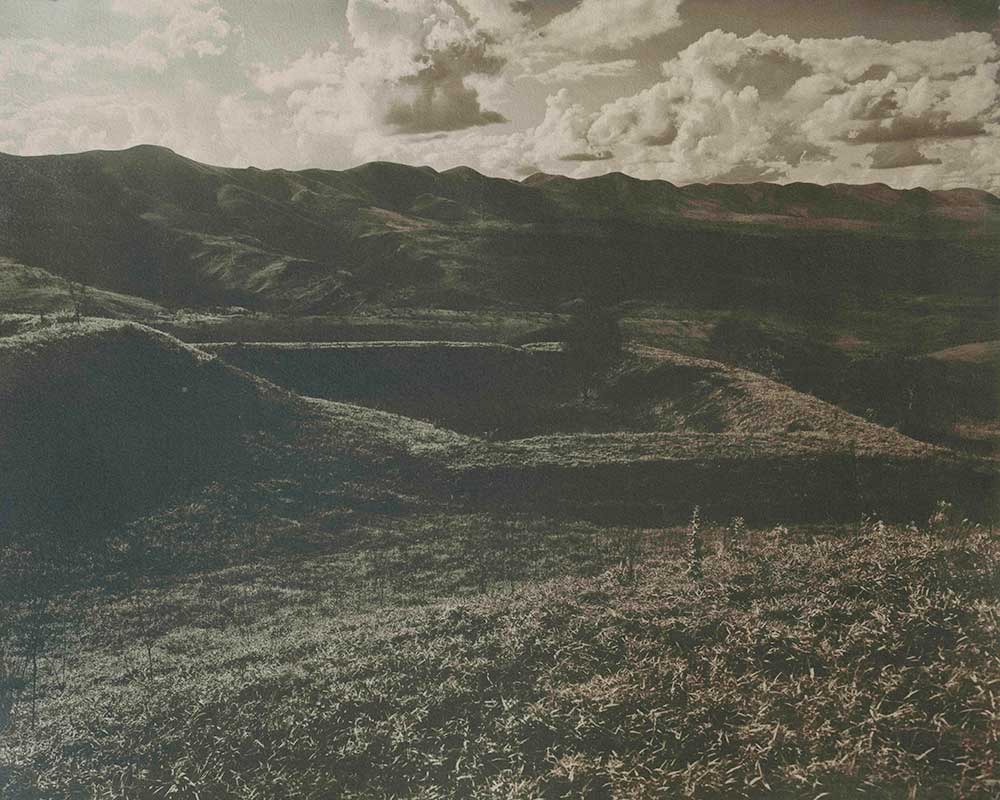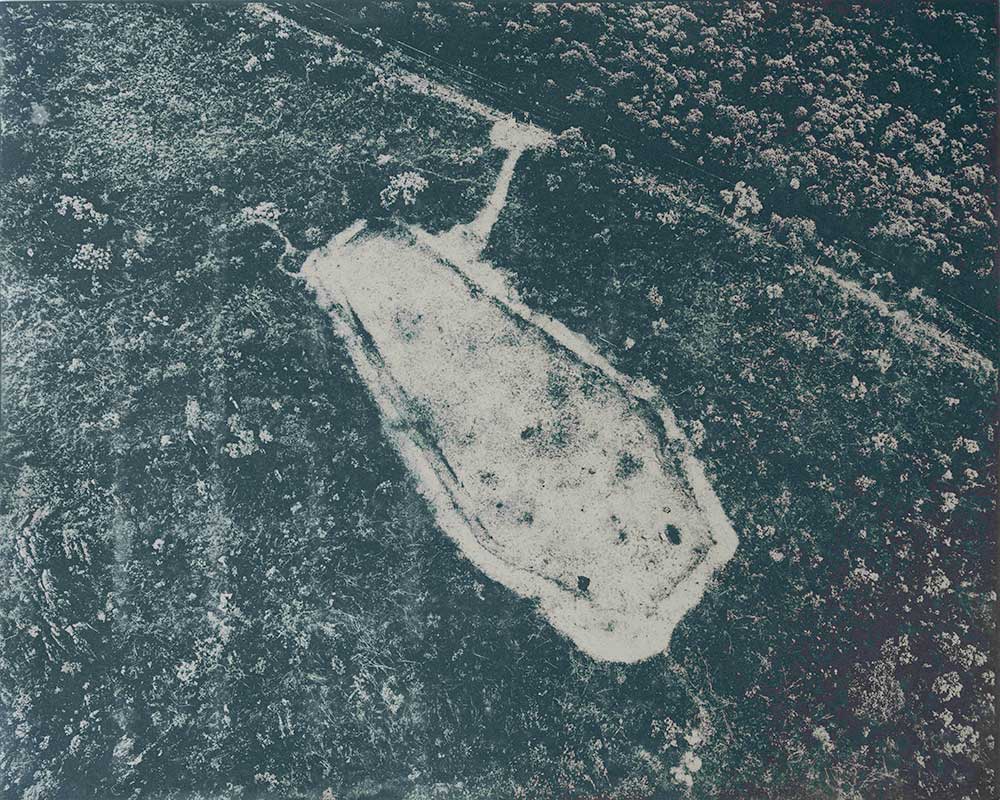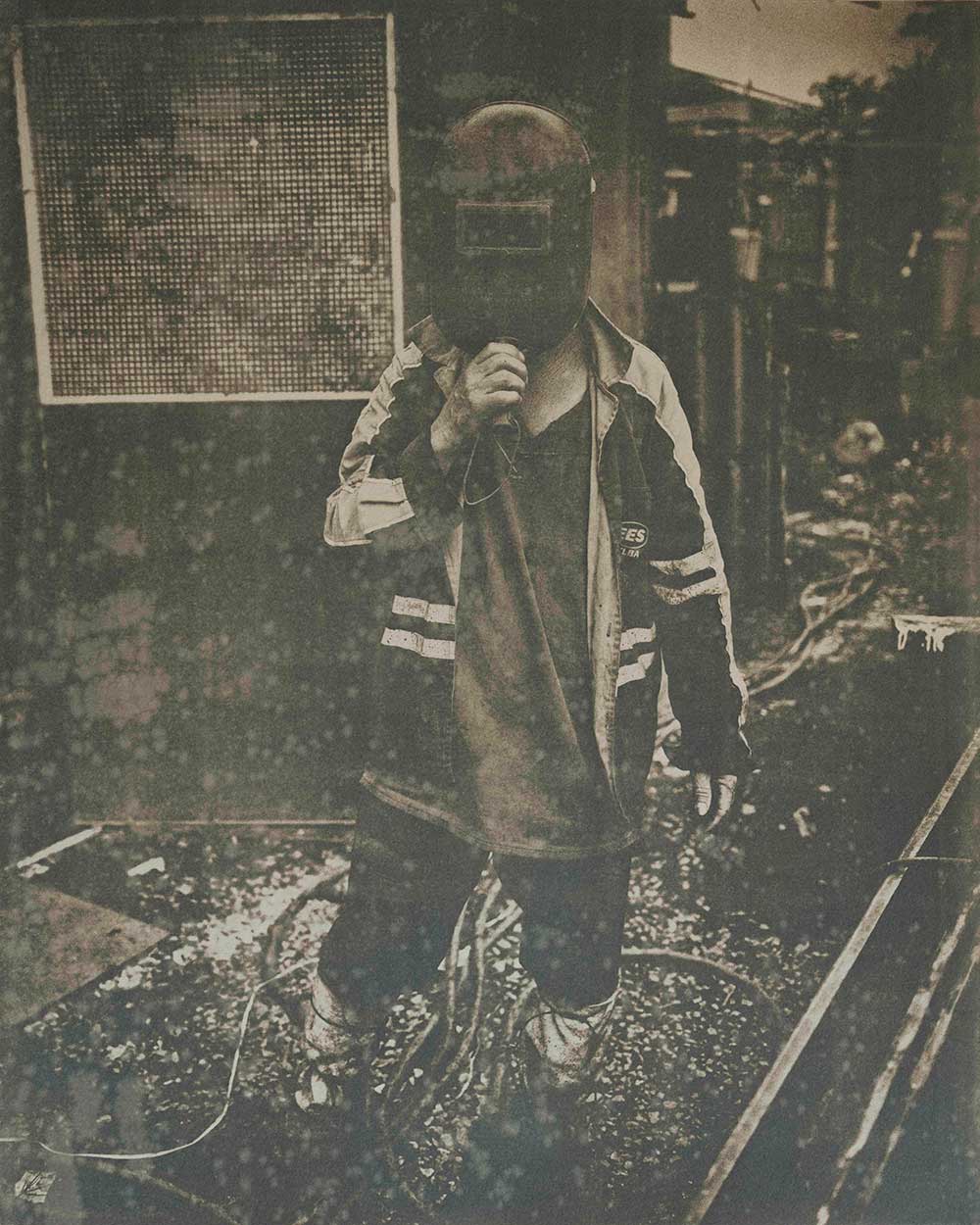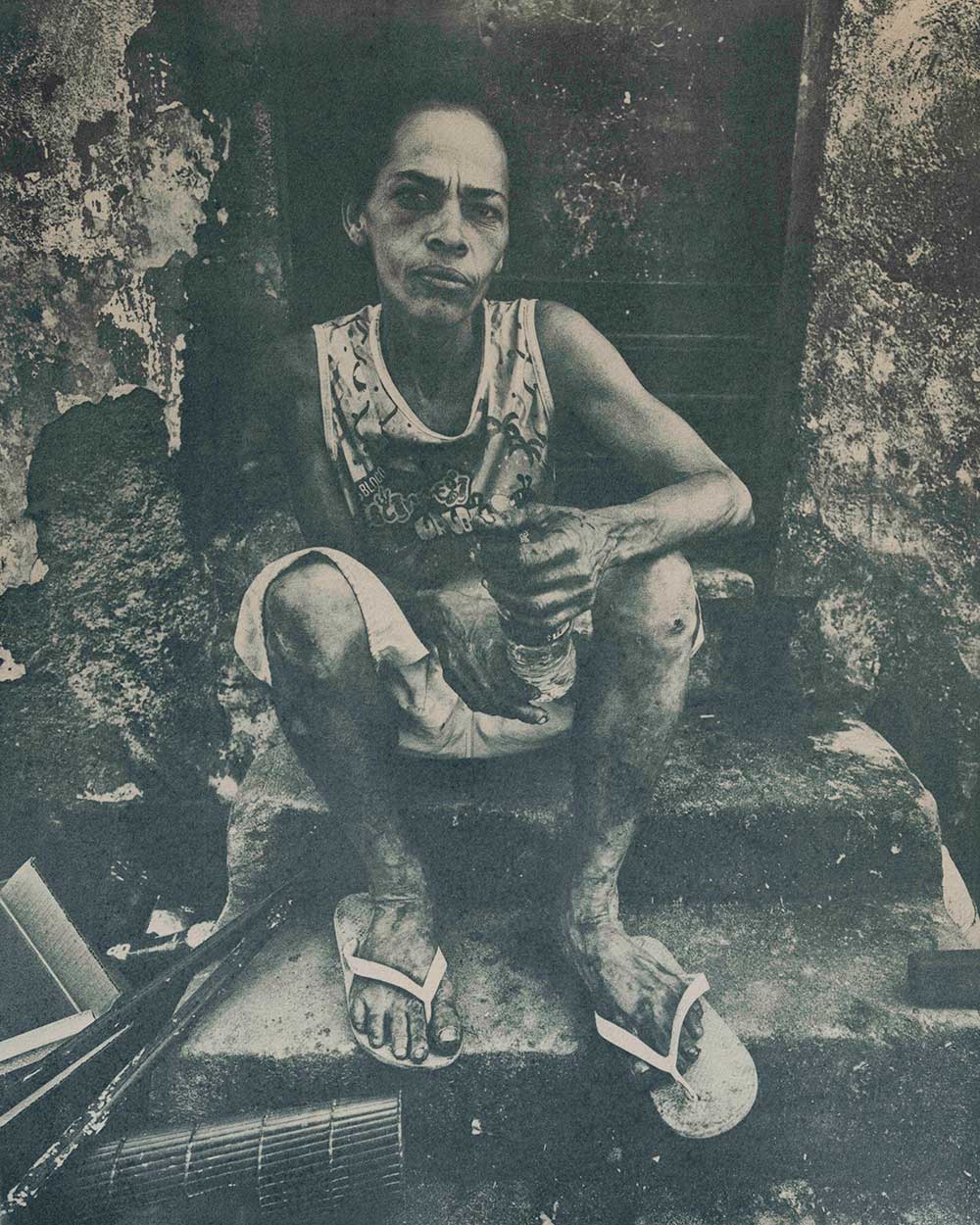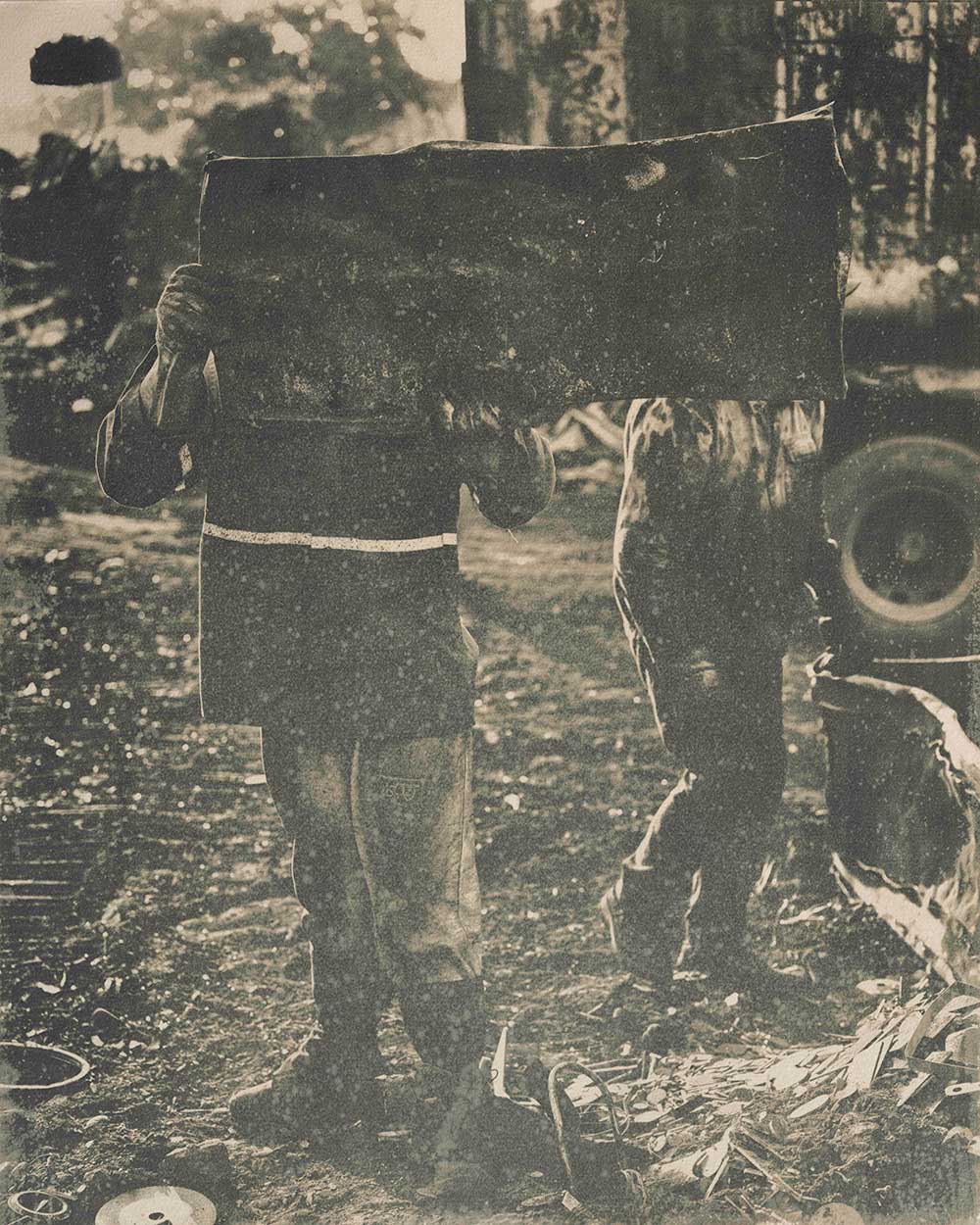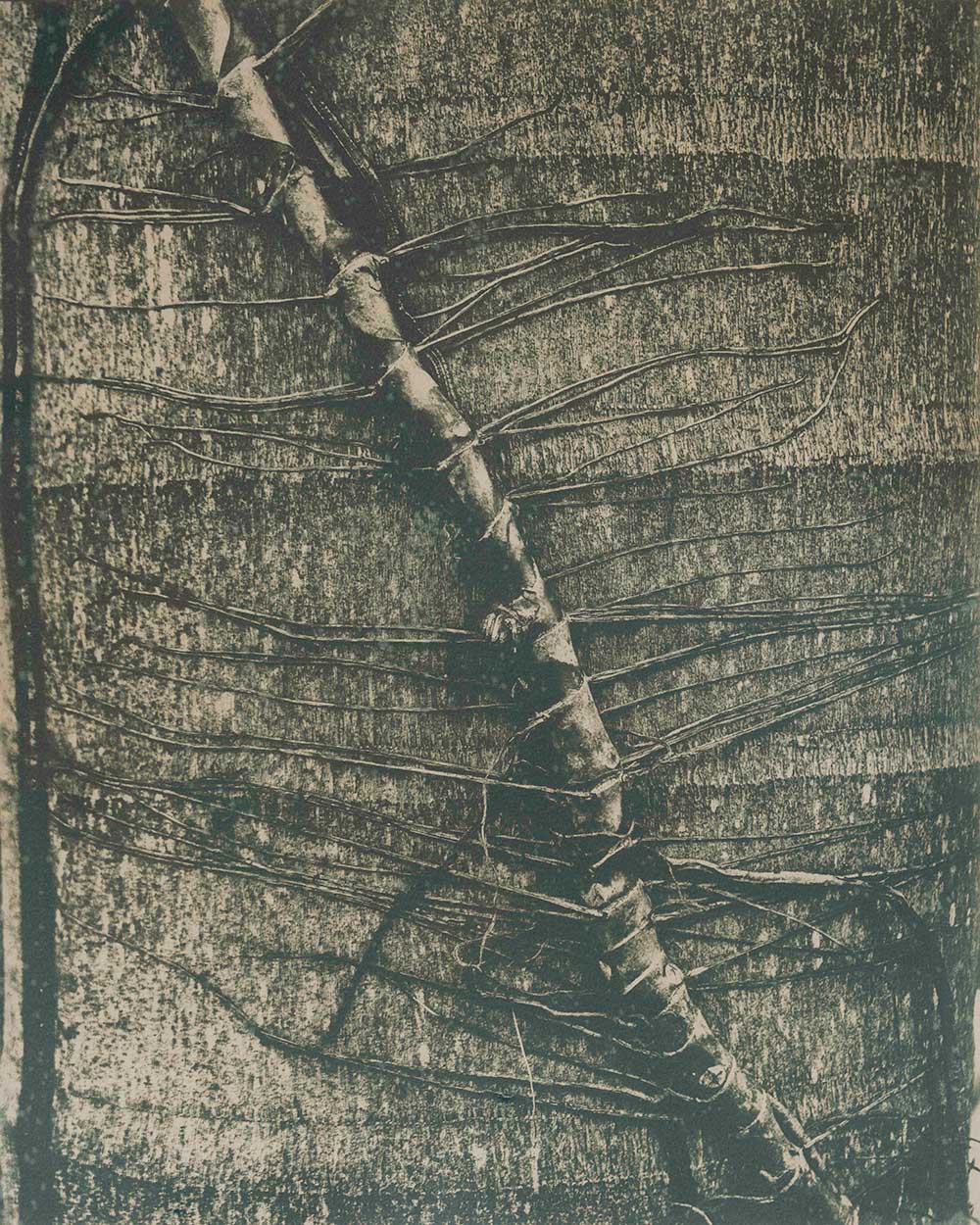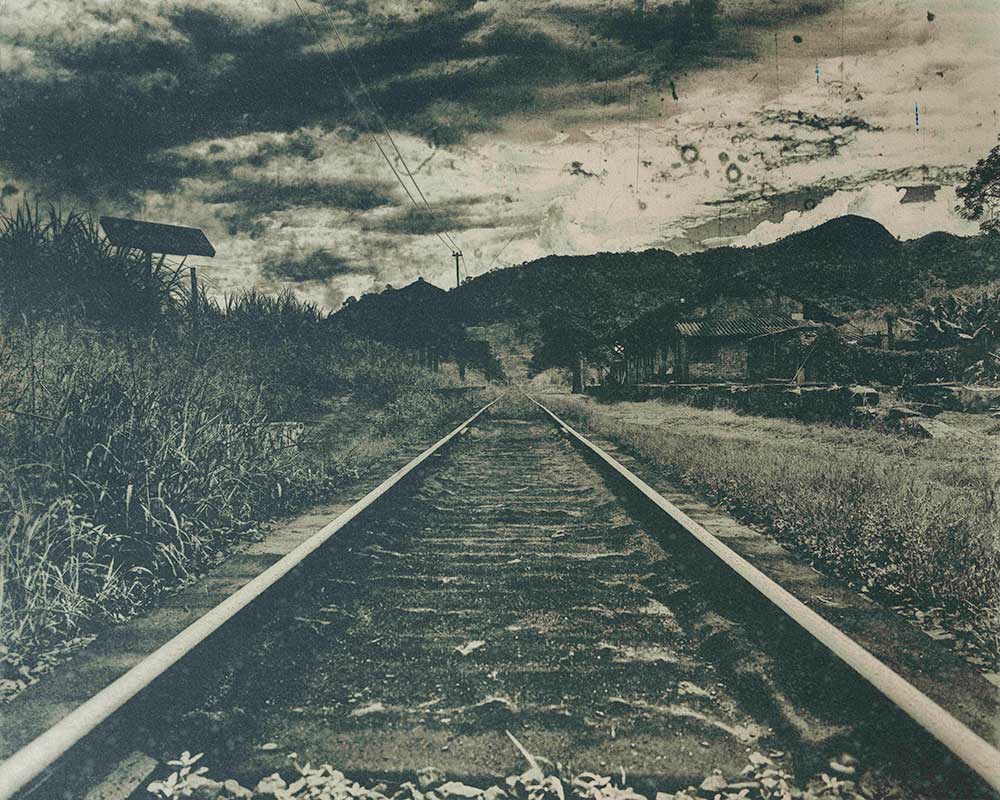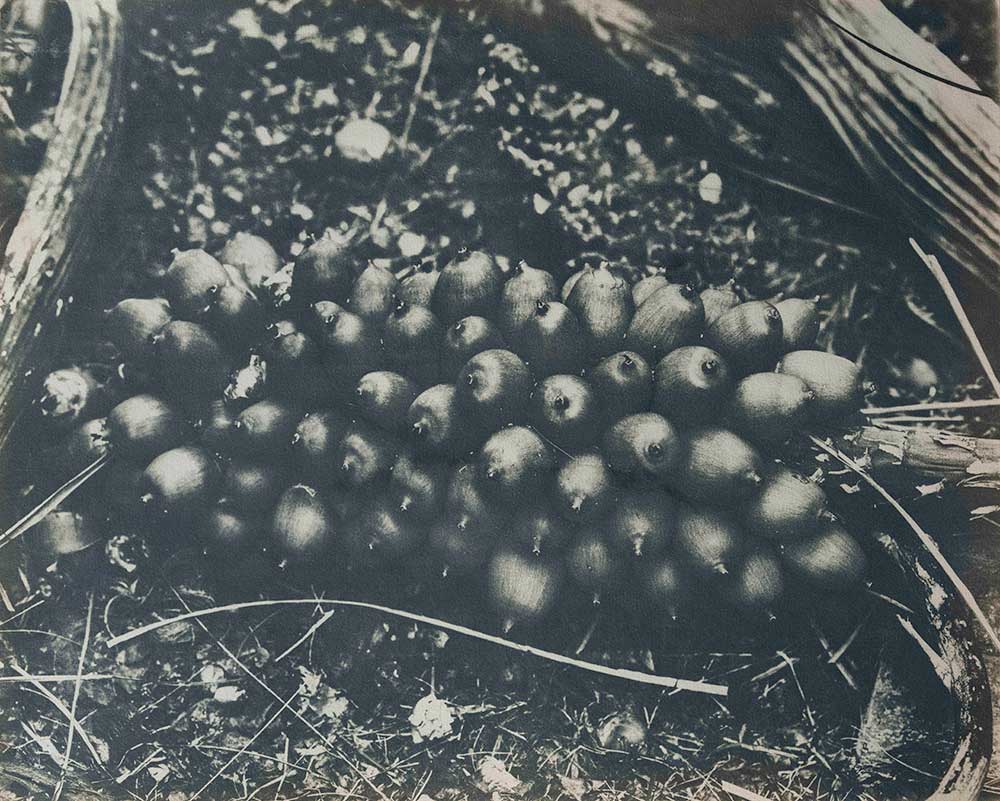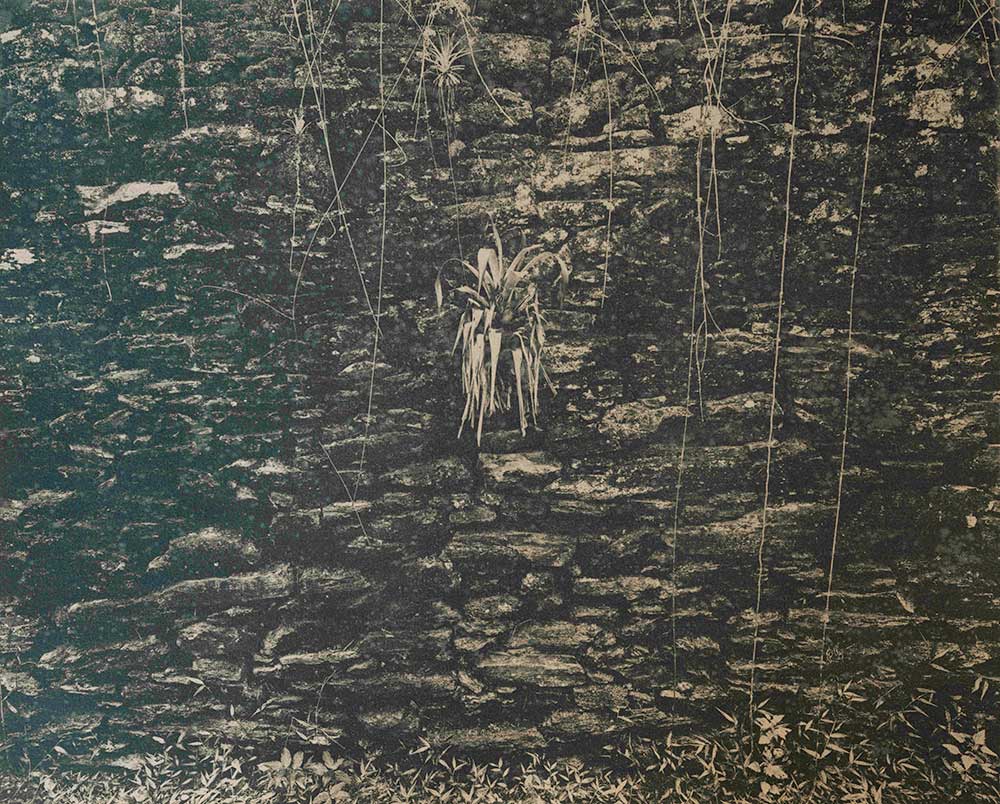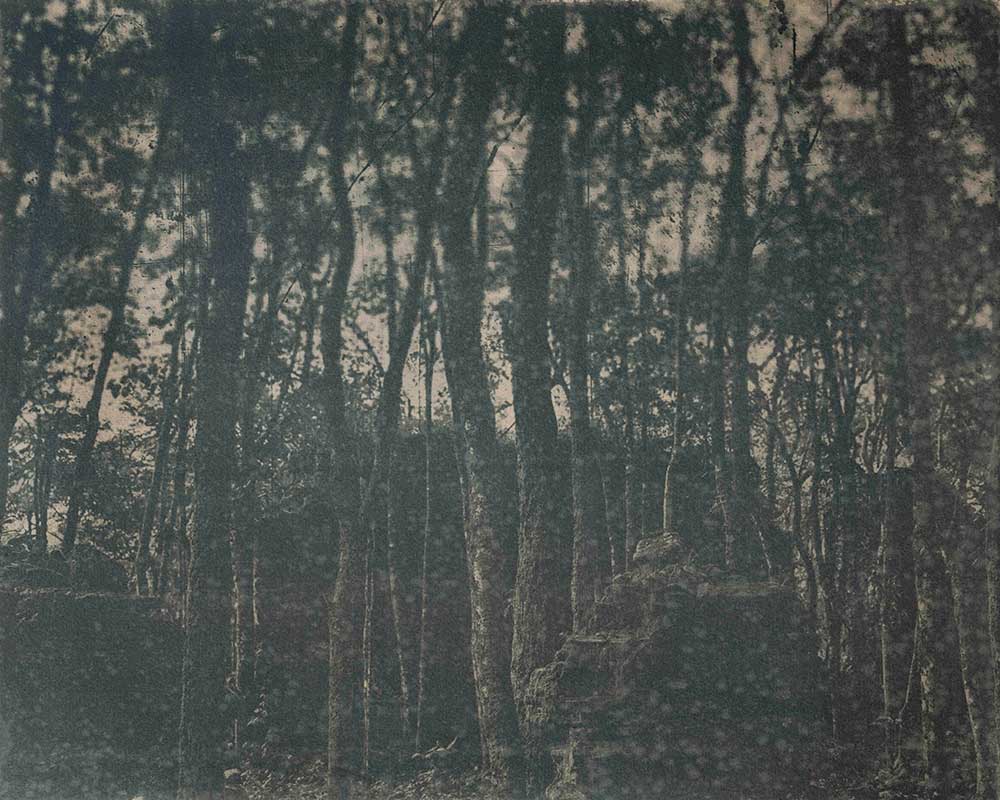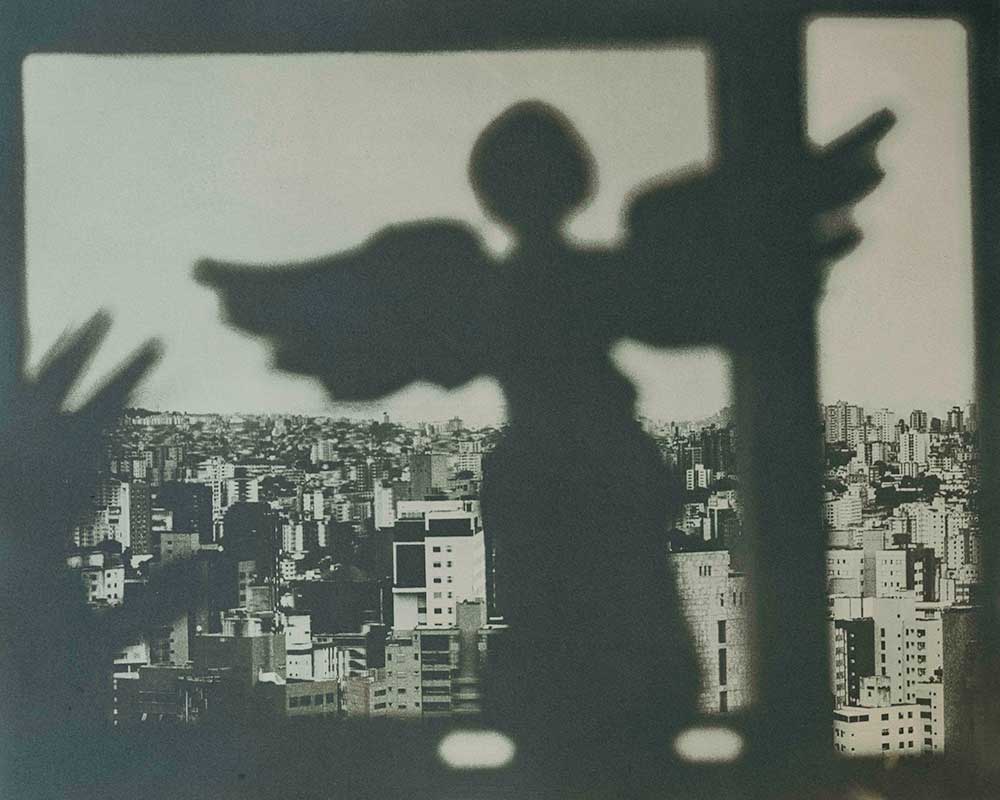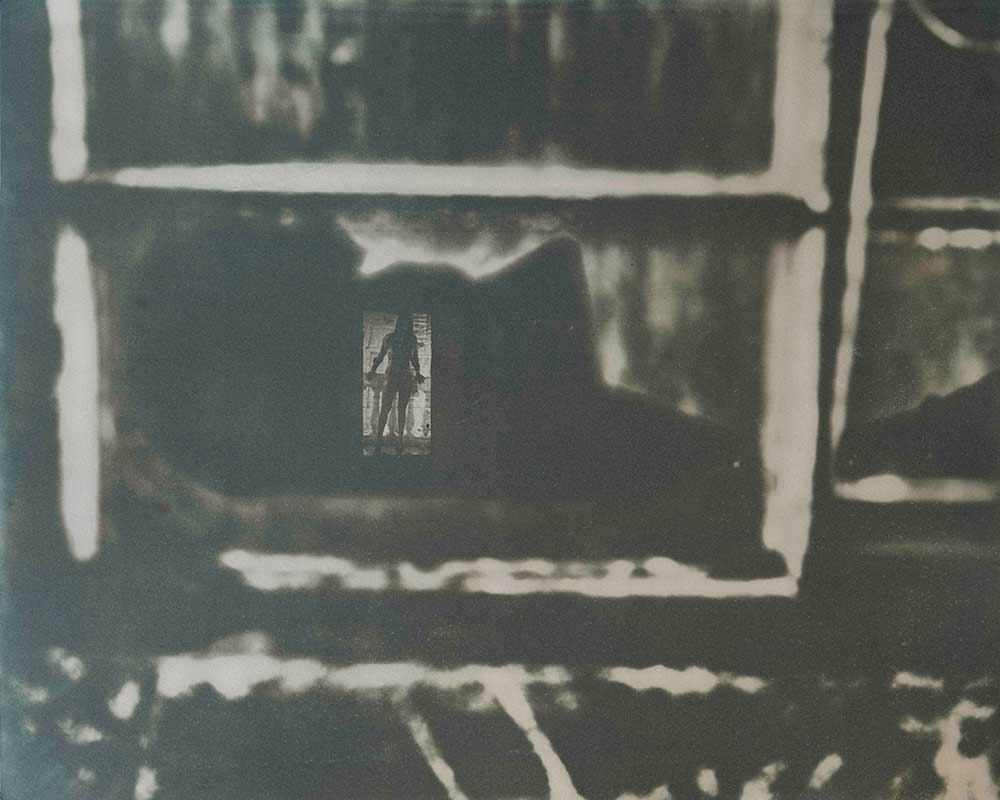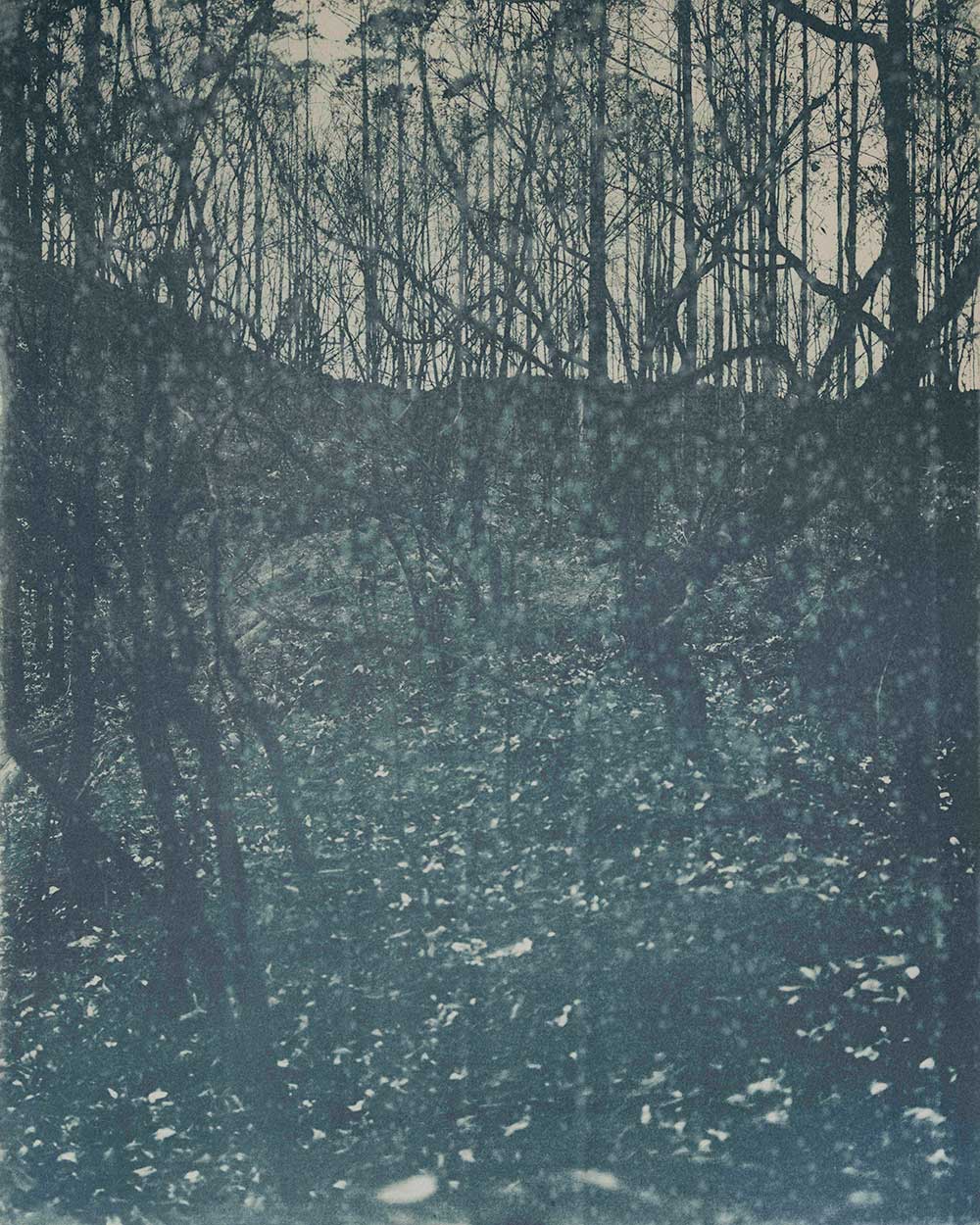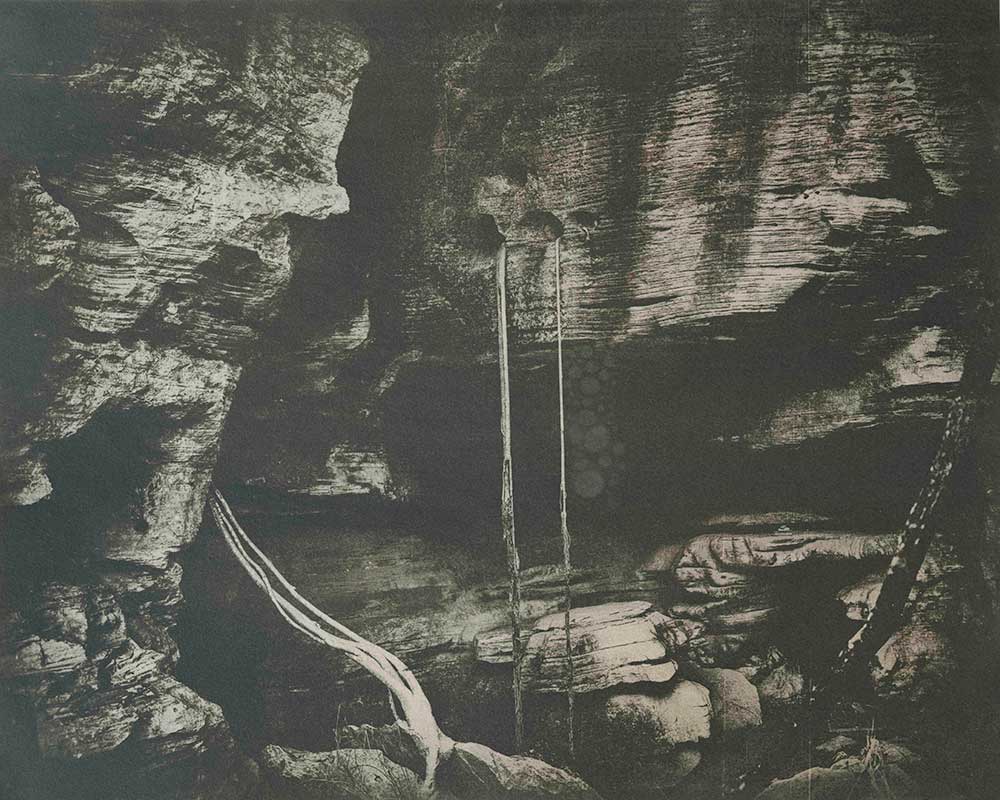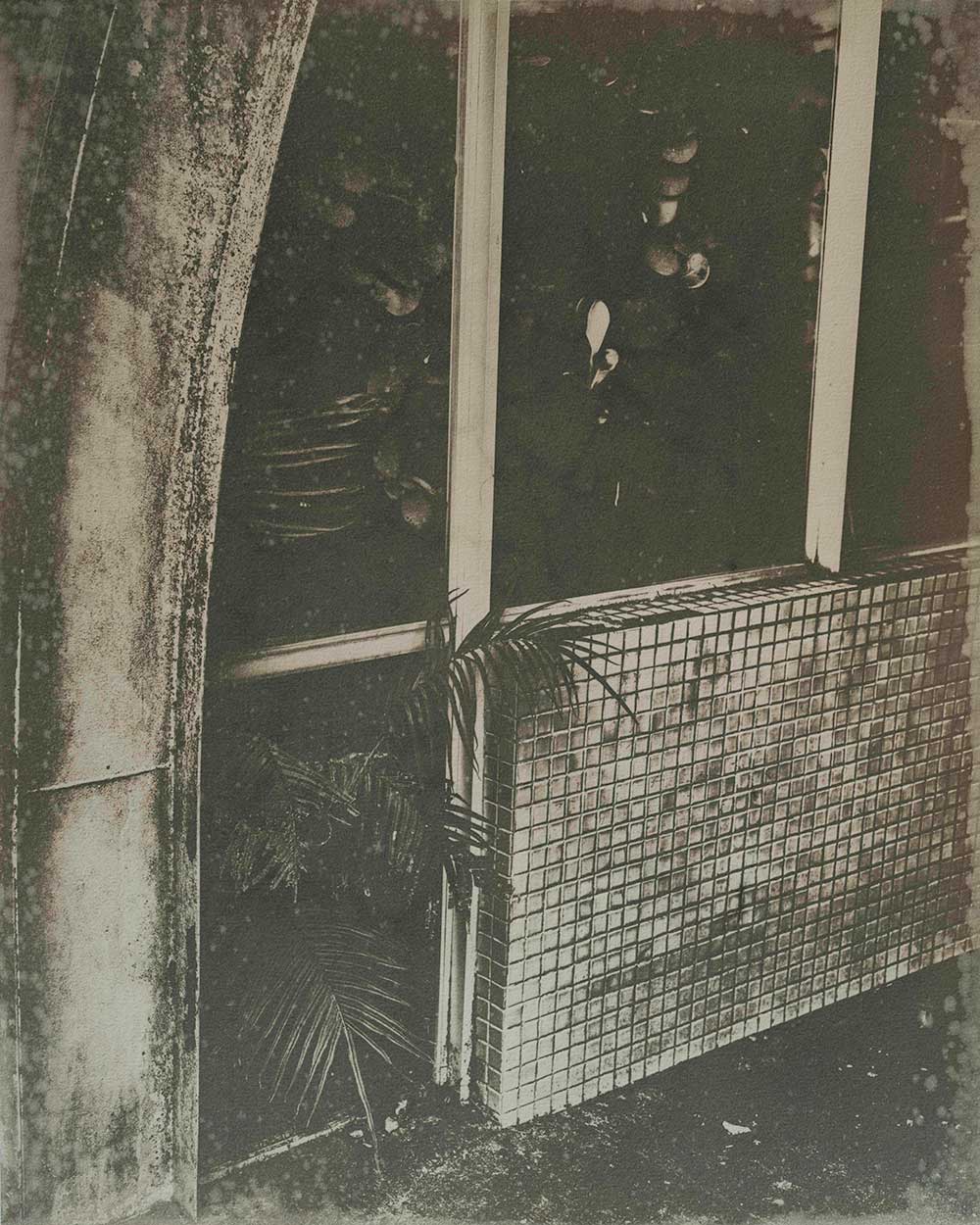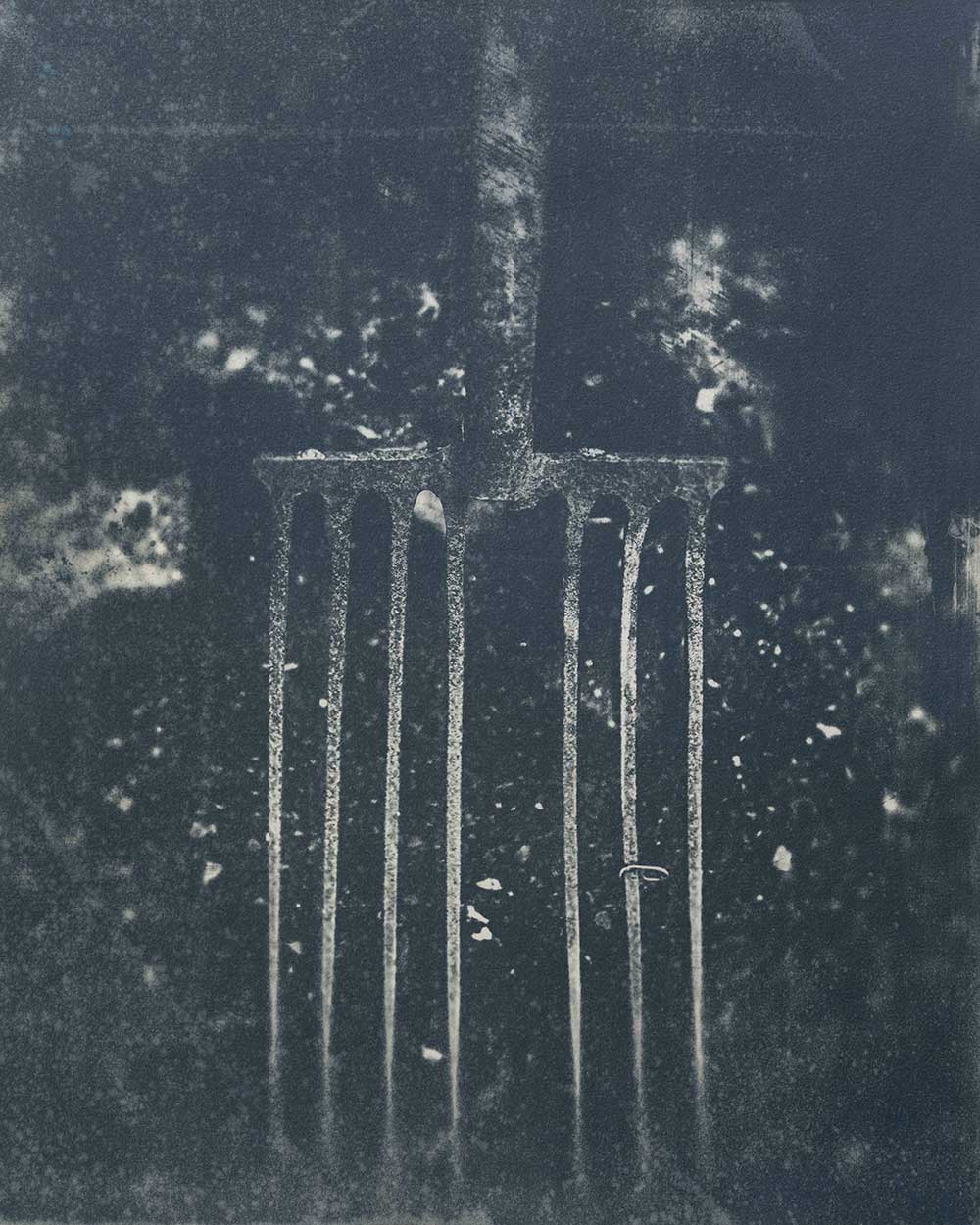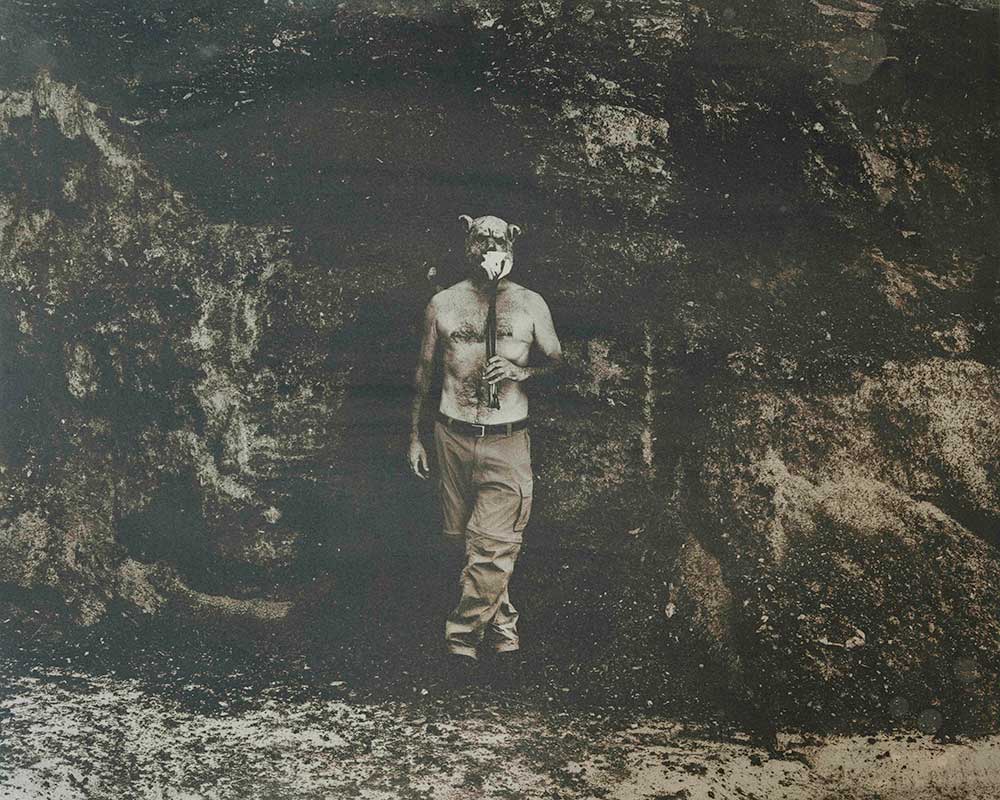Origins is a body of work attempting to scratch the surface of a rich but brutal history. A history of discovery and exploitation in the mineral rich area of Minas Gerais, Brazil (in Portuguese the word exploração translates to both exploitation and exploration).
My work cannot even begin to describe the wounds left on the earth and humanity by the avarice of man, I can only try to document the marks left behind.
This project is composed of coffee-stained cyanotypes, one of the first photographic processes developed in the mid-19th century. Its principal active ingredient is iron salts, evoking the area known as the ‘Iron Triangle’, where the imagery for this work was taken. The state contains the world’s richest veins of iron ore, the mining of which comprises much of its economic activity. Slavery was essential to the cycle of gold mining that began in the 17th century and preceded the iron industry of today. While the institution of slavery was abolished in Brazil (in 1888, the last country in the Americas), its systems and structures have persisted to this day.
The process of staining the images in coffee not only alters the color and tone of the images but also references one of the main activities of slavery in Brazil in the 19th century, the harvesting of coffee beans. The coffee and iron salts used to render these images are themselves commodities that are still mined and made in the area (coffee, iron, gold, silver, people). The process of staining also resonates with the idea of remnants. My work is concerned with recording the reflections and shadows I perceive of this history as well as the direct evidence of it.
My work is concerned with recording the reflections and shadows of a history that is opaque at best. As in my own country (USA) it is a story that is sordid and has permeated the bedrock foundations of society. Capitalism, colonialism, the political systems were all created with the explicit disregard for the commodification of human beings who were considered less valuable than the commodities they were extracting in order to be sent back to Portugal.
In Brazil there existed the Estrada Real (Royal Road), a road that extends from Paraty on the coast all the way to Diamantina in the interior of Minas Gerais (the town was given its name due to the discovery and extraction of diamonds). The Royal Road was a tool of supremacy used to guarantee the rich mineral flow from Brazil to Portugal. It simultaneously was meant to limit the potential of Brazil by making it dependent on and subservient to Portugal. The Estrada Real, despite its haughty name, was meant to choke the ability of Brazil to stand independently from Portugal. The country was poorly educated, and all manufactured goods were meant to come from Portugal with the intention of making Brazil a permanent vassal to the crown.
As a historian as well as a photographer, I am fascinated by that system of supremacy. It’s intricate systems of control that the people learned to live with. Those who held power became the elites and those who toiled under their yoke became accustomed with that which they could not change. The system was installed, and society grew around it. Just as it did in the US. The modern institutions of capitalism were being invented at the time and they too accommodated themselves to the prevailing systems of supremacy.
As evil as these legacies are, there was a bright side. The culture of the peoples who were part of this complex system exists and is vibrant today. The incredible culture of colonial Brazil is exemplified by UNESCO world heritage cities like Ouro Preto, Congonhas and Diamantina, breathtaking in their beauty. Equally incredible is the culture that developed from the mix of Africans brought to mine the riches so desired by the Portuguese crown. Today these places stand as monuments to a past that was built by ambition and avarice
About Michael Naify
Michael is an artist currently living in Los Angeles. His work deals with Politics, Environment as well as psychological/philosophical conundrums. He has lived and worked for many years in Italy where he was involved in the purchase and restoration of historically significant buildings. He started a publishing company in Brazil (Cosac & Naify) that was the largest publisher of art books in that country. Upon returning to the United States, he decided to dedicate himself to art and enrolled in the MFA program at the San Francisco Art Institute. He is currently spending his time between Brazil and Los Angeles.[Official Website]



